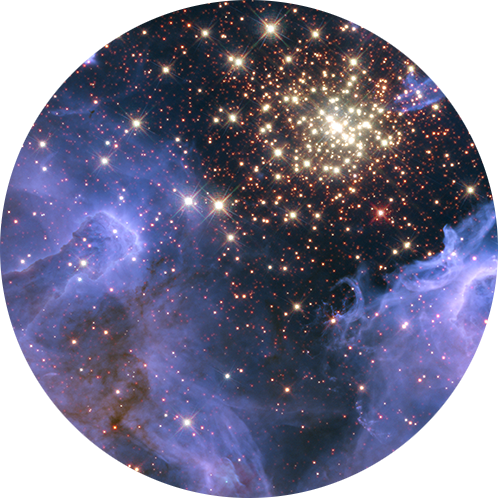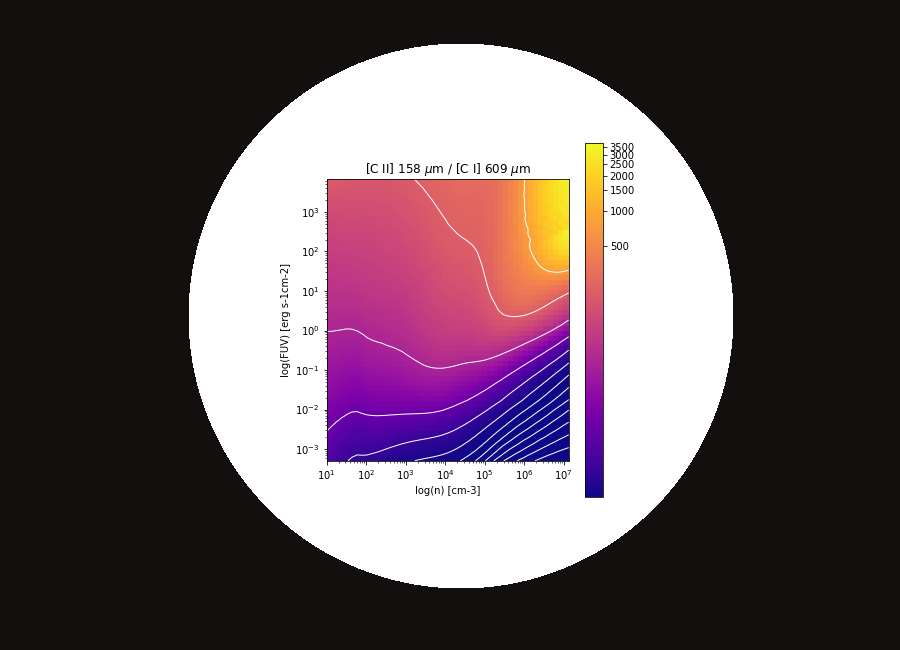
Ultraviolet photons from O and B stars strongly influence the structure and emission spectra of the interstellar medium. The UV photons energetic enough to ionize hydrogen \(h\nu > {\rm 13.6 eV}\) will create the H II region around the star, but lower energy UV photons escape. These far-UV photons (\(6~{\rm eV} < h\nu < {\rm 13.6~eV}\)) are still energetic enough to photodissociate molecules and to ionize low ionization-potential atoms such as carbon, silicon, and sulfur. They thus create a photodissociation region (PDR) just outside the H II region. In aggregate, these PDRs dominates the heating and cooling of the neutral interstellar medium. The gas is heated by photo-electrons from grains and cools mostly through far-infrared fine structure lines like [O I] and [C II].
The PDR Toolbox is an open-source, science-enabling tool for the community, designed to help astronomers determine the physical parameters of photodissociation regions from observations. Typical observations of both Galactic and extragalactic PDRs come from ground- and space-based millimeter, submillimeter, and far-infrared telescopes such as ALMA, SOFIA, JWST, Spitzer, and Herschel. Given a set of observations of spectral line or continuum intensities, PDR Toolbox can compute best-fit FUV incident intensity and cloud density based on our models of PDR emission. One can also fit H2 rovibrational emission excitation diagrams to determine temperature, column density, and ortho-to-para ratio.
The current version is 2.3.1 (released Feb 06, 2022)
New Paper on PDRT!
The PhotoDissociation Region Toolbox: Software and Models for Astrophysical Analysis,Marc W. Pound & Mark G. Wolfire 2023, AJ, 165:25
Read it here.
Recent Release Highlights
New KOSMA-tau models
A new set of KOSMA-tau models kt2020 is now included in the Toolbox. The new ModelSet have been computed with physical paramaters that closely match the wk2020 ModelSet, making them very appropriate for comparing results from the different PDR codes.
Updated H II region ionized gas diagnostic models & plots
We have updated the models and diagnostic plots for observations of Fe and Ar in H II regions.
Please remember to cite use of the PDR Toolbox!
And please join our discussion forum.
Reliable Astrophysics at Everyday Low, Low Prices! ®


